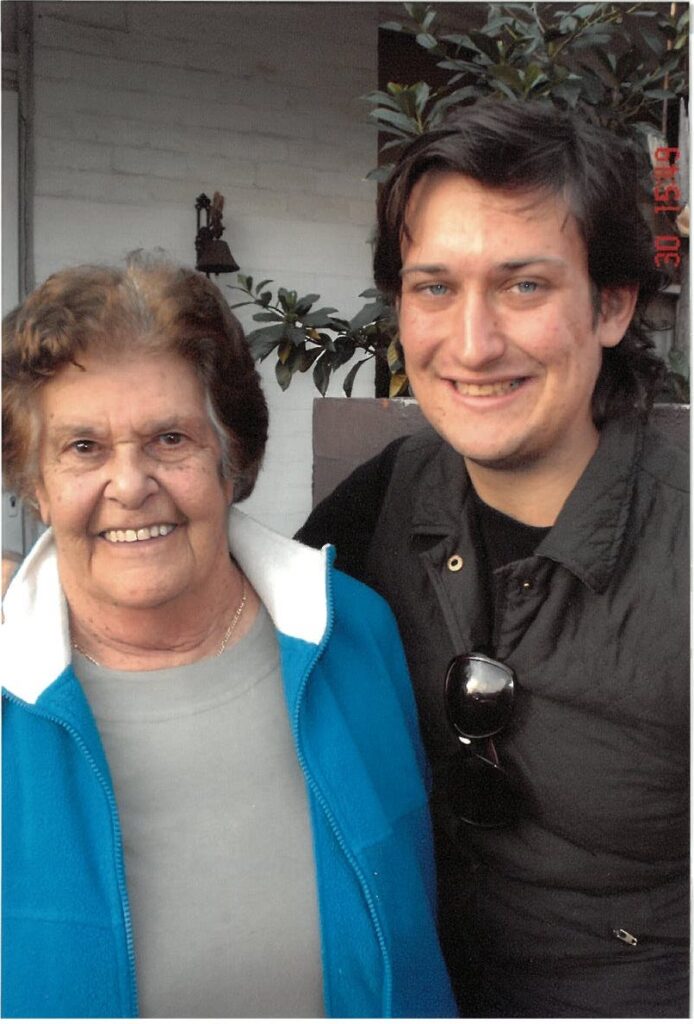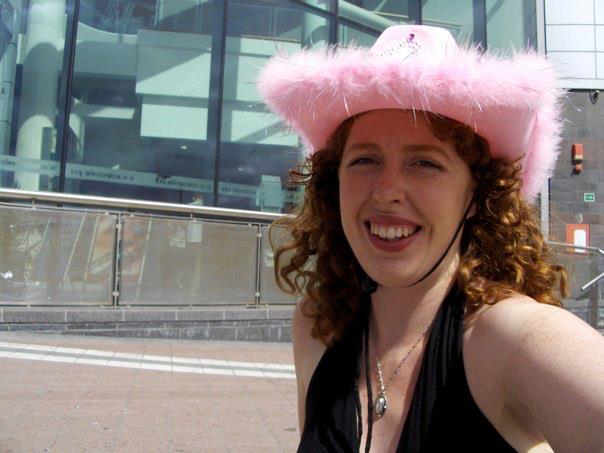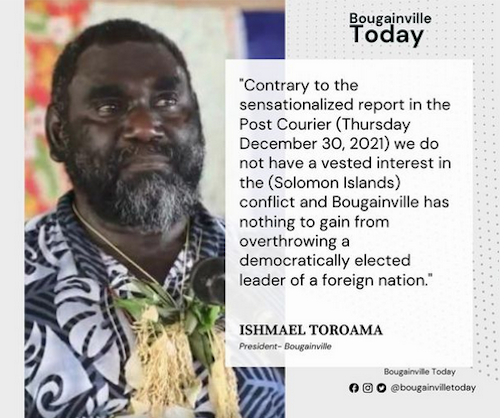
Orientation
In his time, the late 19th to mid-20th century, Pierre Janet was considered a great psychologist and rival to Freud. But in Yankeedom he is barely known today. I bring him up in this article, not only because his ideas are worthy of being known, but because in many ways his was a precursor to the work of the communist psychology built by Lev Vygotsky, Alexander Leontiev, and Alexander Luria. In the early part of this article, Janet’s ideas are favorably compared to Freud in the importance of conflict; the origin of neurosis; the ways in which patients are trapped; how centralized the personality is; therapeutic techniques; the place of transference; the ideal patient; and adherence to the scientific method. In the middle section of the article Janet’s theory of three levels of personality are discussed.
Psychologists have spent many years dissecting different spectrum of the mind. These include all aspects from sensations to perceptions to thinking, to analyzing, comparing and contrasting, evaluating, deciding and planning. But what about what people do? After all, psychology is not just what is in the mind or heart. Psychology also studies gestures, postures and movement. Part of this article distinguishes reflexes from behavior, actions, habits, conduct and practical-critical activity. In the last third of the article, these different forms of doing are compared. I close with the similarities and differences between Janet and Vygotsky and socio-historical psychology. As resources for this article, I used Henri Ellenberger’s large tome, The Discovery of the Unconscious: The History and Evolution of Dynamic Psychiatry which has a long Chapter on Janet. The second resource is Jaan Valsiner’s and Rene van der Veer’s book The Social Mind. Valsiner is also the author of a large biography of Vygotsky. Lastly I shall reference B.R. Hergenhahn’s book An Introduction to the History of Psychology, which I used for many years while teaching the subject.
Family background
Pierre Janet was a medical doctor born in 1859 who died in 1947. His early years of psychological work overlapped with the great hypnosis period of Jean-Martin Charcot and the The Nancy school. Janet was a consummate Parisian. He was born and died in Paris. He came from an upper middle-class family who produced many scholars, lawyers and engineers. His father became a bookseller, specializing in music while his mother was very religious. Pierre was the oldest son of a young mother who was 21 at time of his birth, while his father was 45. His parents were very distant and the only relative who showed interest in Pierre was his uncle, Paul. Paul wrote books on philosophy which were classics in France for two or three generations. He also wrote many studies on the history of philosophy. Paul’s son wrote studies on philosophy of science and on the psychology of scientific discoveries. Pierre’s mother died in 1885 well before Janet became famous. He wanted to do psychopathological research and decided to take up medical studies. Janet began his medical studies in 1889 and completed them in 1893. He worked in Charcot’s wards. Charcot died in 1893. In 1894 Janet published a book on philosophy he had been working on for 12 years. He was married in 1894. Janet wrote two books on neurosis: Character and Neurosis: An Integrative View and Obsessions and Psychasthenia.
Intellectual influences
Janet was deep into French intellectual life, and he crossed paths with Maurice Blondel, the sociologist Emile Durkheim; the socialist Jean Jaures, and the psychologist Alfred Binet. Janet was very intellectually ambitious. In his Latin dissertation, Janet chose Francis Bacon and the alchemists as topics and thought he was in a similar situation as Bacon. He wanted to found a new experimental psychology based on synthesizing science and magic. He became life-long friends with process philosopher Henri Bergson who was very interested in memory for his arguments about creative evolution. Late in his book Matter and Memory, Bergson refers to Janet’s research on dissociation of personality, hypnosis and suggestion. They shared an interest in Charcot’s work. Janet also studied the work of Proust and Valery on memory. Over the years, he built a vast and comprehensive system in which almost every possible aspect of psychology found its place. He kept a card catalogue of his books. Late in life he became friends with the author James Baldwin. Further In his quest to understand the unconscious mind, Janet became interested in graphology and narcoanalysis as a way to link hypnosis to chemical substances. Lastly, he explored electric shock therapy for curing depression. He kept an extensive herb garden in which he collected and classified herbs. He enjoyed hiking and botanizing in the Fontainebleau woods.
He was not only a scholar but a very skillful clinician and psychotherapist, and an admirable lecturer. As a teacher he tried to follow the Socratic Method. He believed there would come a time when a man could travel through the past in the same way as he now travels through air. He would have nothing to do with journalists and granted no interviews.
Freud vs Janet: Similarities and Differences
Both Freud and Janet were medical doctors and they were interested in the same kinds of neurotics, namely obsessives and hysterics. Both were interested in the importance of traumatic events in the shaping of personality and they both valued working with hypnosis to get to the trauma. Both were interested in patients who were “stuck” (fixation) and they both thought fixation kept people from living in the present. They both also believed that fixation haunted the patient’s future. For Janet, fixed ideas narrowed consciousness in the present which kept the person from completely functioning in the here-and-now at work. They both dismissed parapsychology and religion. Janet thought that therapy would eventually replace religion.
However, they differed in important ways. First, here is a summary of Janet’s psychological analysis.
- The discovery of subconscious fixed ideas is caused by a traumatic or frightening event that has been replaced by symptoms. This narrows the field of consciousness.
- Hysterical crisis are disguised reenactments of fixed idea.
- Fixed ideas are subconscious characteristic, a feature of hysteria vs obsessive neurosis, and were unconscious.
- Obsessions and phobias were conscious.
For Freud neurosis came about because of repressed sexuality, and as the patient being arrested at the phallic stage of development in either the Oedipus or Electra complex. Janet thought Freud’s ideas about sexuality were “over the top”. Janet thought the foundation for neurosis was the inability to do creative work in a consistent, expanding manner which he called “conduct”. There were two types of neurosis:
- Asthenias syndrome – insufficiency of psychological force; and,
- Hypotonic syndrome – insufficiently of psychological tension.
These will be discussed later.
Both agreed on the importance of conflict psychologically, but the location was different. For Freud the conflict was driven by the clash between the id and the superego. For Janet, there was conflict between psychological force and tension. Their techniques were different. Freud interpreted dreams and used free association techniques to get at the unconscious. Janet, anticipating the surrealists, used automatic writing as an active role play to get at unconscious drives. Though Freud did not think much of the ego compared to the id and the superego, he still saw the ego as a centralizing and coordinating force in the structure of the psyche. Janet thought neurotics had no centralizing force. Like Gurdjieff, Janet thought his patients did not already have an I. They had to make one. Janet claimed priority over Freud in having discovered a cathartic cure for neurosis brought forth by the clarification of traumatic origins.
They were on opposite sides of the fence when it came to the relationship between patient and therapist. Freud wanted to cultivate transference and this meant encouraging dependency in his patients. Janet discouraged dependency and expected his patients to internalize their conversations and to become autonomous, the sooner the better. For Janet it was very bad for someone to be overly dependent. This craving to be hypnotized and need to confess to the psychiatrist had to be gradually stopped. Janet’s method was to phase the sessions out.
Further, the settings and the classes they worked with were different. Janet worked in public hospitals with working-class and poor people. Freud had a private practice with upper-class people. Lastly, their ideal types were different. The motto of Freud’s genital character was “love and work are the well-springs of life”. For Janet, rational-ergastic work was the goal which Janet claimed was scientific practice. The table below summarizes their differences.
Janet vs Freud Compared
| Janet
Medical Doctor |
Category of comparison |
Freud
Medical Doctor |
| Yes – psychological force vs tension |
Importance of conflict |
Yes – id vs super ego |
| Lack of activity practice in work
· Asthenias syndrome -insufficiency of psychological force
· Hypotonic syndrome –
insufficiently of psychological tension |
Origin of neurosis |
Repressed sexuality
Oedipal complex
Electra complex |
| Fixed ideas narrowed consciousness in the present now |
In what way are patients stuck? |
Fixations haunted people at different stages of development |
| No centralized I
(The same as George Gurdjieff) |
How centralized is the personality? |
Ego was relatively centralized vs id and superego |
| Automatic writing
Active role play |
Therapeutic techniques |
Dream interpretation
Free association |
| Discouraged dependency |
Place or misplace of transference |
Encouraged dependency |
| Rational Ergastic work: scientific practice |
Ideal |
Genital character
“Love and work are the well-spring of life.” |
| Worked in hospitals
with working class |
Setting and social class of patients |
Worked privately with the upper classes |
| Experimental |
Scientific follow-up |
Speculative |
Janet’s ideal state
The highest manifestation of humanity for Janet, like Vygotsky and Marxists, is the ability to act upon external objects and change reality in the service of adaptation and to introduce an increase of order (today called negentropy). This includes an ability to completely focus on the here-and-now at work. Janet called this “conduct”. For Janet, the individual is capable of controlling both force and tension in his conduct. This opposes the natural tendency of the mind to roam through the past and the future rather than staying present when working.
Levels within Psychology
Janet divided the human being into three levels.
Lower tendencies
Lower tendencies include reactive tendencies like expressive, explosive acts. Without psychological regulation, these are tendencies which are like instincts or reflexes. Still within the lower level there are perceptive tendencies which aim at modifying something in the exterior world through waiting and searching rather than taking the initiative. Habitual actions are also included.
The second layer within the lower level are imagination, representative memory, fantasy and daydreaming. There are two inferior levels: emotional reactions and useless muscular movements. Lastly, at the highest of the lowest level are the socio-personal tendencies in which there is differentiation between conduct directed at others and the conduct directed at one’s own body. Examples of this are imitation, collaboration, command and obey, learning and playing roles, hiding and showing, play, sex, and ceremonies. Social emotions at this level include effort, fatigue, sadness, joy, and delusions of persecution
Middle tendencies
Middle tendencies include elementary intellectual tendencies These include verbal language, symbolic thought, production, and explanation. Human actions began to be dissociated from bodily contact. Results from discussion among individuals and other social members include doubt, deliberation, and decision.
Highest tendencies
Higher tendencies are labeled by Janet as rational–ergetic tendencies or conduct.
This is the tendency of focused work. This means the capacity to stick things out even if it derives no initial satisfaction.Virtues include voluntary action (rather than being told what to do) initiative, perseverance and patience. It includes the capacity to endure waiting and using the rules of logic. The person at this level is capable of experimenting when a system is criticized according to its practical result.
Then Janet says something very interesting. He says the search for individuality extends into time (history) and space (around the world.) By this he means that conduct at this level involves being concerned about how his work is part of history and interacts with other cultures around the world. A person at this level has confidence in the concept of progress.
Exploration of Neurosis
For Janet neurotics were for various reasons stuck at levels one or two and were not capable of conduct. For Janet, a good experimental approach consists in knowing one’s patient well—in his life, schooling, characters and his ideas—and to be convinced that one never known him enough. Psychological energy consists of force and tension. Psychological force is the quantity of elementary psychic energy available to accomplish numerous prolonged and rapid acts. They are both intended and manifest. Psychological tension is the capacity to utilize his energy at a high level in the hierarchy of tendencies of coordination and any creative and scientific act. Janet did not believe the supersession of neurosis involved an absence of tension. Tension can be good depending on the right kind. The greater the number of psychological operations synthesized, the more novel the synthesis. The more novel the synthesis, the higher the psychological tension.
When dealing with a neurotic, the first concern is to evaluate psychological force and psychological tension involved. There are two syndrome that can result from this evaluation.
Asthenia syndrome— is where there is an insufficiency of psychological force
In a mild version of this syndrome, patients are dissatisfied with themselves. They are unable fully to enjoy happiness or pleasure and they become easily anxious or depressed. An intermediate stage is a kind of withdrawal. It is not so much that they are dissatisfied with themselves, per se, but there is an unhappiness with people. There is a feeling of a void, where they do not like people and do not feel liked by others, The most severe form of the asthenia syndrome. This syndrome is where someone is unable to work at a steady occupation. For Janet, like Marxists, meaningful work is the most important thing in life.
Hypotonic syndrome – is where there is insufficiency of psychological tension for managing higher level functions.
Primary symptoms are the incapacity to performs acts of psychological synthesis. This means the lower, middle and higher functions are not coordinated. Secondary symptoms are a waste of nervous energy that cannot be utilized at the desired level. For example, distracting oneself on the job on the internet or with mindless chattering with others. What also goes with this are feelings of inadequacy which come from working at a job below their qualifications.
The treatment of asthenia syndrome: managing the psychic economy
Janet’s suggestions for treatment of the first syndrome was to
- Increase in energy. These involve some very practical suggestions about regulating energy. Teaching patients the best way to prepare for sleep; structuring the distribution of breaks throughout the work day, and taking vacations during the year. Secondly having a qualitative diet, including vitamins.
- Diminishing expenditures. Janet emphasized getting rid of what he called “energy leeches”, people who drain energy with their problems and not contribute anything. Janet said that people are very bad at terminating relationships, even when they are counterproductive.
- Liquidating debts – Janet had a very strange term for this, but what he meant was getting rid of fixed ideas or traumatic reminiscences.
All these interventions are involved in helping patients get to level three to be able to conduct rational-ergetic tendencies.
Treatment of hypotonic syndrome
Derivations meant channeling agitations by transferring them into useful or tolerable activities to increase and heighten psychological tension. Janet looked down on drugs, travels, and love affairs because they are temporary and uneconomical. Lastly, there is training in performing a complete and achieved action and build-up to those steps.
On the whole, when therapy went well it was a therapeutic revolution. The reason for this is because it demonstrates how a healthy relationship to the therapist can be a model for the patient’s relationship with others. In an optimal sense the patient would be able to use the modeling of their relationship with the therapist to build a new community based on what has been learned. Most importantly, the therapeutic relationship should be able to promote conduct at the highest level, preforming work that is rational-ergastic.
From Janet’s Conduct to Vygotsky’s Practical-Critical Activity
In order to understand how Janet’s concept of “conduct” is a bridge to Vygotsky’s “practical critical activity,” we must start by defining a whole spectrum of human “doings” or “ways”. I begin with reflexes at the simplest part of the spectrum on the left, moving toward practical critical activity as the most complex level on the right.
Reflexes
Reflexes are innate instincts that happen very quickly and are a product of biological evolution. All animals have reflexes, and no mental life is necessary to have them. Neither do you have to be conscious for reflexes to happen. Examples include sweating, pulling away from a fire, or knees reacting to the tapping of doctor’s hammer. Reflexes stay more or less the same during the lifespan but they become less sharp with age. Human beings have little control over reflexes. They are a normal part of everyday life. They are in place because they help us to survive since biological beings’ reflexes do not require any theory coming from an individual experiencing them. Reflexes are biological doings which are innate, automatic, and part of nature’s formula for success as a biological species.
Behavior
Behavior is different from instincts because it is based on learning and occurs among virtually all mammals. Like reflexes, no mental life is necessary. Behavior can change simply because of associations happening before the behavior (Pavlov) or consequences after the behavior (Skinner). Consequences can be reinforcers (positive and negative) and punishers (positive and negative). You don’t have to be conscious of your behavior in order to have it. For example, a male who is violent with his partner and children might not know what his behavior will be right before he becomes violent. However, his “warning signs” are known by his wife and children because it is in their interests for survival to recognize it. Behaviors are not as fast as reflexes because learning takes time before the behavior becomes automatic through associations and consequences. Examples of behavior include most postures, gestures and voice inflections that are molded without any conscious or mindful intention.
Behaviors can change over time, or they can become habits, as we shall see. Unlike reflexes, behavior can be changed if feedback is received. Like reflexes, behavior permeates the everyday life of virtually all mammals, but unlike reflexes, behaviors can be maladaptive. Like reflexes, behavior requires no theoretical activity on the part of an individual member of a species. it is important to keep in mind that what is automatic and occurs below the level of consciousness is not necessarily biological. It seems natural because it happens quickly. But there was a time when it did not happen quickly, but we weren’t paying attention. An example is driving a stick shift. There was a time when you had to think about what you were doing, and your behaviors were awkward. But then your body “got it” and you performed it well and quickly. It seems like a reflex. Behaviors are doings which are learned, occur below the level of consciousness. They can be individual or social, given the level of complexity of the organism.
Actions
Unlike either reflexes or behavior, actions require the participation of the mind and being conscious of what the individual is doing. Actions are limited to primates and are especially prominent in human beings. Actions are the result of the intentions of the mind carried out in space and over time. Actions occur more slowly and are more deliberate because, at least in humans, they require setting goals, making plans, and making lists before carrying them out. Unlike reflexes and behaviors, actions may have a direction which persists over time and is less subject to interruptions. Actions are part of everyday life, but they are often crowded out by reflexes and actions. A standard to measure actions are individual evaluations of past problems along with actions designed to reduce stress. Actions are doings which are learned, can be cultural and involve the mind’s intervention in solving problems and changing one’s direction constructively.
Habits
Like actions, habits can be either individual or cultural experiences, but their focus is mostly on primates and especially human beings. The mind is involved some of the time and sometimes not, as habits can be formed consciously or they can be acquired unconsciously. Bad habits are usually unconsciously formed but it takes the mind to develop a plan in order to form new habits. Sometimes consciousness is necessary, and with bad habits it occurs unconsciously. Habits are learned slowly at first but can be sped up and dropped into the unconscious. A way to think about this is at its best, habits are behaviors that have stood the test of time, by first making them actions.
Examples of bad habits are drinking too much alcohol, drug abuse, smoking, or eating junk food. Good habits are painting four hours a day every Tuesday and Thursdays from 6pm to 10pm. Another good habit can be writing four days a week from 5am to 7am every Wednesday or Friday. Habits are actions that have thickened and have a more committed direction. Other primates are likely to have unconscious habits but not conscious ones. Habits can be controlled and strengthened with negative feedback as the system is held in equilibrium. Or habits can result in positive feedback where bad habits are amplified and can drop from the socio-cultural level to a biological level, such as alcohol or drug addiction. The standards to be measured are the past of an individual and relationship to present circumstances and future goals (actions). There is no theoretical activity required for habits. What makes good habits unique is that unlike behaviors, they can be repeated over time when steered by a particular goal that comes from action.
Conduct
This is what Janet was most interested in cultivating in his work with patients. For him it was the indicator of a most evolved human being. Conduct is drawn from social-cultural sources, particularly scientific practice. Individual learning is involved but that learning is disciplined by the rules, procedures and methods of science. It is unique to humans and both mind and consciousness are necessary. Conduct is a thick, very slow process that takes years of formal training that is required to be a doctor, lawyer, architect, teacher, engineer, or musician. Conduct requires the highest degree of control, not just for the individual but for the entire professional community. The standards to be measured include socially established standards of excellence which are collectively analyzed, criticized, and improved upon at conferences, in journals, or in the case of musicians, through cooperation, competition and critical audience response.
Unlike any other form of doing, in conduct theory it is necessary to inform conduct. Conduct improves theory, and theory then improves conduct by taking it to a higher level. Conduct is not a habit because it is not thickened by an individual’s goals, which come out of action, but instead out of the goals of a scientific field. Conduct which is part of a social-cooperative institution has historical traditions with standards which are emulated and improved. The individual “conductor” is both the product of that professional community and a co-producer of it.
From Conduct to Practical Critical Activity
Similarities between Janet and Vygotsky
Vygotsky and Janet were similar in important ways. Both were against the reductionism of behaviorism – there was more to human beings than stimulus-response. Both thought that the study of consciousness was important for its role in mediating the relationship between reactions to the environment and the behaviors that followed. They were both sympathetic to Gestalt theories of perception as wholes rather than bits or atomistic information. Yet they were critical of the passive sense of the environment that Gestalt’s perceptions emerged from. Both Janet and Vygotsky were also critical of subjectivist psychology such as psychoanalysis because they ignored the place of doings that we have discussed.
At the same time, both Janet and Vygotsky were against biological reductionism. They would oppose theories of temperament which argued that people are born with a certain personality. Rather they would say that personality is the result of temperament and socialization. In the process of being socialized, individual experiences accumulate resulting in a personality which is more than temperament. Both Janet and Vygotsky were against overspecialization within a field at least in part because they were well-rounded as intellectuals. Both were interested in theatre, painting, and poetry, and these made their theoretical insights into psychology richer.
Furthermore, both Janet and Vygotsky were committed to sociogenesis. For each, the origin of all psychological functions begins not inside the individual, but in cooperation between people. Only later do these socio-historical experiences become internalized. These internalization processes become social again when the individual goes back into the world to work. Lastly, both psychologists thought that meaningful work was central to psychological health. Each felt that human beings were at their best when they were working. For Janet it was rational-ergetic conduct, while for Vygotsky it was practical-critical activity.
Differences between Janet and Vygotsky
Scale of sociogenesis
A major difference between Janet and Vygotsky has to do with the scale at which conduct and practical-critical activity took place. For Janet what was social was pretty much at a micro-social interaction. For him, sociogenesis was between the individual and their families, teachers, and therapists. The closest Janet came to a larger scale sociogenesis was when he referred to the scientific community. For him, conduct expresses itself in two settings:
- In the therapist’s relationship with his patient.
- In the psychologist’s relationship with the scientific community.
In both cases the psychologist has a theory, and the theory is turned into conduct in therapeutic interventions and at scientific conferences. As a result of this conduct the theory is improved so that the next round is improved because the theory has improved.
In the case of Vygotsky (please see my two articles What Is Socialist Psychology Parts I and II for more in-depth coverage.) Practical critical activity does not take place between an individual and a community. Rather, practical critical activity is a collective political practice in which communities intervene politically to change a society. For example, a socialist community has a theoretical commitment to run candidates from their party in the next election. Some want to do this while others say it is a waste of time, and that their practice should be focused on organizing workers. They go ahead with the campaign. The campaign results in a certain number of votes. That was their practice. The practice then turns into a more refined theory based on how they made sense of the results. The new theory then engaged in a deeper, hopefully more advanced practice. In other words, there is a dialectical spiraling interaction between theory and practice. Janet would not disagree with the process but the process would be taking place at a collective and political level.
Social class
Janet worked in public hospitals with working-class and poor people. But as far as I know, he never incorporated class differences into his theory of conduct. On the one hand, his references to conduct were to professional activities. However, a lot of his interventions were with classes well-below those professions. What would make sense is that it was more likely the poor and working-class people would have trouble with lower levels, such as adequate sleep, good food and exercise. At the middle level working-class people might have difficulty fending off “energy leeches”, such as their families or counterproductive friendships. Working-class people might well have problems concentrating, since their work was often miserable and they are less likely to have mind-body integration where they were totally focused on the present, as in conduct. Vygotsky, like Janet, also worked with poor and working-class people, and as a communist I suspect he would be more likely to integrate social class into his practical-critical activity, but I am not aware that Vygotsky did this explicitly.
Human history
Janet’s sociogenesis not only operated at a micro level, but his incorporation of history into his theory of conduct was only vaguely developed, if at all. It is reasonable to think he had an appreciation that his interventions were not limited to immediate social interaction, but that these interactions accumulated and became a thickening historical collective conduct embodied in the practice of psychology as a professional field. Janet was well aware that his conduct interventions were part of a history that was developing between Charcot, the Nancy School, Freud and himself. He did have a sense that this accumulation of knowledge of the scientific community led to progress historically, as well as progress between Europe and the United States.
Vygotsky was extremely conscious of his theory as rooted in history. He was also conscious that his work with Leontiev and Luria was attempting to create a communist psychology. He knew his practices were political and he struggled to overcome whatever anti-communism he faced when he journeyed to psychology conferences. He had a deep sense that what he was co-creating was new. He wanted to create a Das Kapital for the field of psychology.
Practical, Critical Activity Defined
Like Janet’s conduct, practical critical activity is unique to the human species. No other animal does this. But unlike Janet’s conduct, practical-critical activity is not primarily about individual learning, but rather a socio-cultural relationship between socialist political theory intervening in industrial capitalist society. Likewise, the reflective moment of mind is not an individual mind but the superstructure of knowledge of society (science, art, math, philosophy) from which theory is drawn. Being collectively conscious is essential to practical critical activity. The speed at which the theory – practice-theory takes place is slower than conduct because more people are involved, and the interventions take place at a larger scale. The direction of practical-critical activity is a spiral – either improving the world or making the world worse because of the existence of wars, economic crises, or fascism. Practical critical activity is not a normal part of everyday life – with the exception of revolutions. Days and weeks can elapse between rounds of theory – practice – theory. The standards by which practical critical activity is judged is optimally that the self-organization of the working class is improved. What happens is that new technologies are invented which shrink the ratio between necessary labor and freedom, so the human species creates more and more negentropy with less and less collective labor. This practice is critical, reflective and, at its best, resists habits not becoming old and conformist because the social-historical world is constantly changing.
In sum, practical-critical activity is a uniquely human socio-historical activity. It is the structured, recursive, and meaningful political process executed by human beings. We intervene in the infrastructure, structure, and superstructure of society for the purpose of promoting socialism. We do this by drawing from the accumulated wisdom of past super-structural knowledge to reflect, analyze, compare, and contrast, evaluate, and plan our next intervention. Optimally, this takes the shape of a spiral, with higher and higher interventions which are more depthful, fuller of breadth, and expansive.
Conclusion
The purpose of this article is fourfold. The first is to introduce the neglected work of one of the great psychologists of the late 19th and mid 20th century, Pierre Janet. I do this by contrasting him favorably to Freud. Secondly, I present his theory of three levels of human functioning. Thirdly, I present a neglected subject of psychology, the field of “doings”. I contrast five ways of doing: reflexes, behavior, actions, habits, and Janet’s category which he called “conduct”. Fourthly, I close the article by contrasting the similarities and differences between Janet and Vygotsky. One of the main differences between them is that Vygotsky’s theory allows for a sixth way of doing: practical-critical activity. The last part of my article shows the ways practical-critical activity is different from Janet’s conduct.
• First published in Socialist Planning Beyond Capitalism














 Boys club, misogynistic policing culture
Boys club, misogynistic policing culture If you're ever stopped by an officer, ask 'Am I being detained?'
If you're ever stopped by an officer, ask 'Am I being detained?' If the answer is no, you're free to walk away
If the answer is no, you're free to walk away Make a note of what's said
Make a note of what's said 





